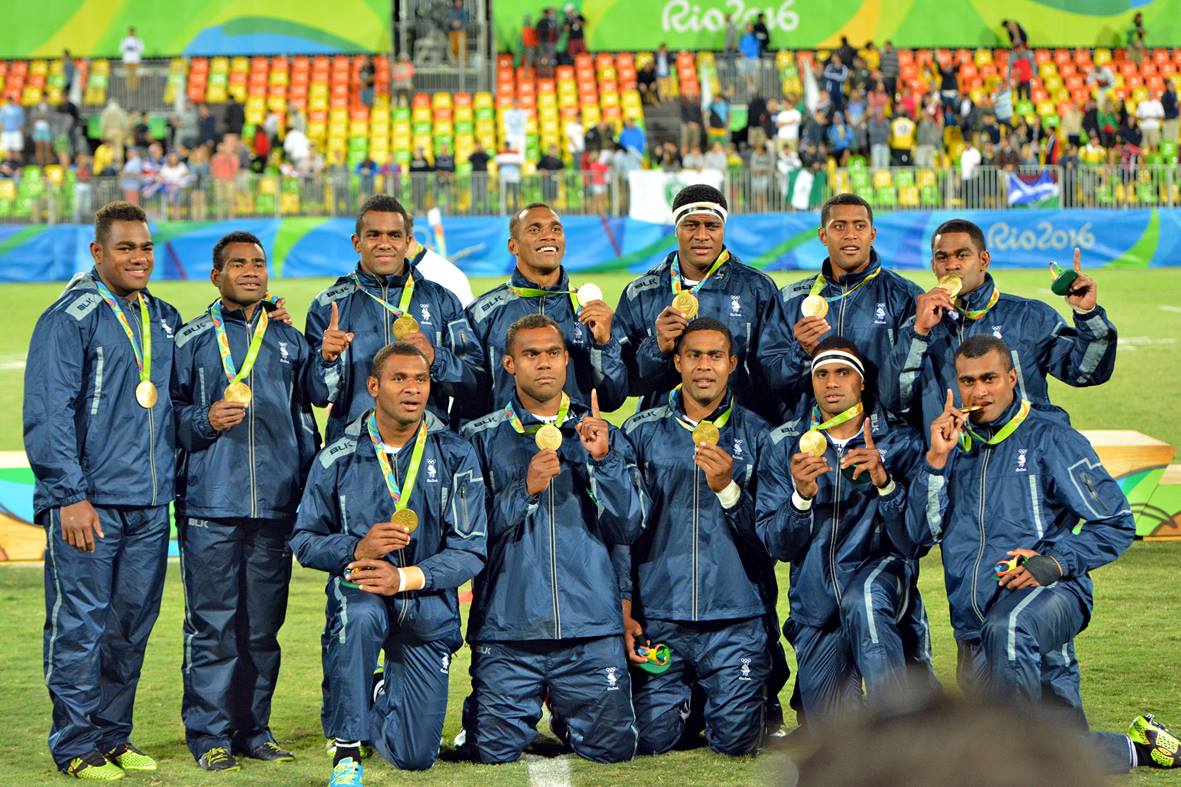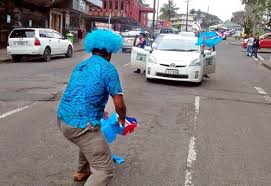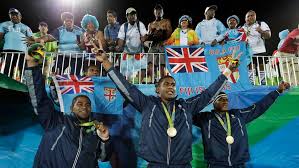Our Fijian team won the gold medal in the new Olympic sport of rugby sevens in Rio de Janeiro.

Fiji’s rugby Sevens team was the pre-Olympic favorite. The team had won the last two world rugby sevens competitions.
We finished ahead of larger countries like South Africa, Australia ,Argentina & Britian.
The game was played at 10 a.m. Friday and in Fiji most businesses closed to allow their employees to watch the match.
The national rugby stadium in Suva was filled with 15,000 people who watched the match on a large screen.
When the final second ticked off the clock in the 43-7 victory over Great Britain, people went crazy and danced in the street of Nadi, Suva, Sigatoka in fact just about everywhere in Fiji.
“I was just thankful to the lord for blessing us and giving us an opportunity to win in a mega-sport arena like the Olympics,” Captain Courageous Kolinisau told a press conference that began with the sound of applause. “I never dreamed of being an Olympian, let alone being a medalist, let alone being a gold medalist. The whole world were amazed at the absolute respect that the players showed Princess Anne while accepting, from her, their coveted Gold Medals. Each player in turn knelt on both knees, accepted their medal and then clapped with cup hands in a traditional Fijian thanksgiving ritual.
Watch the scene on You Tube `
https://www.youtube.com/watch?v=O6GvvJFNhgE
Prime Minister, Frank Bainimarama announced a public holiday for August 22. That is when the team will return from Rio.
The march route will be through the city from the Flea Market to the ANZ Stadium via Thurston St, McGregor Rd, Bau St, and on to Laucala Bay Rd to the stadium.
“Monday is a special holiday that has been set aside for the celebration of the Olympic gold victory that no other Pacific country has ever had. Celebrations will be held at the ANZ Stadium,” Economy Minister Aiyaz Sayed-Khaiyum said.
The team will be accorded a traditional welcoming ceremony by the Vanua Rara o Nakelo and will be garlanded by the Ballantine Memorial School 7s team that won the girls 7s title last weekend. “His Excellency the President will hand over the incentive that the Fiji Government had announced, with respect of the winners of a gold medal. The $30,000 each will be given to 17 people including the 13 players and four in management”
“Members of the public, supporters and families are invited to wait at Prince Charles Park in Nadi for the Team Fiji Welcome Ceremony at 2.30pm,” AFL spokesperson Christopher Chand said.
“The gates at Prince Charles Park will open from 10am on Sunday in preparation for the Team Ceremony.” Let us celebrate the win.


